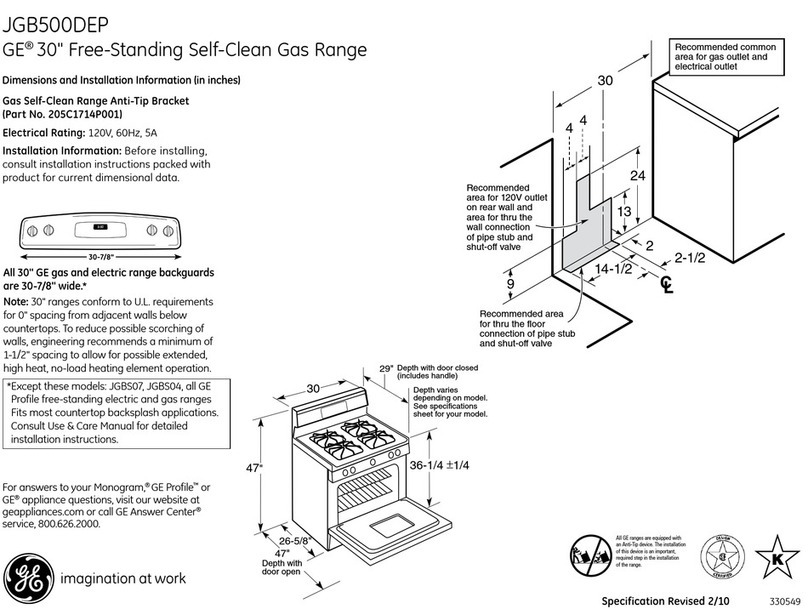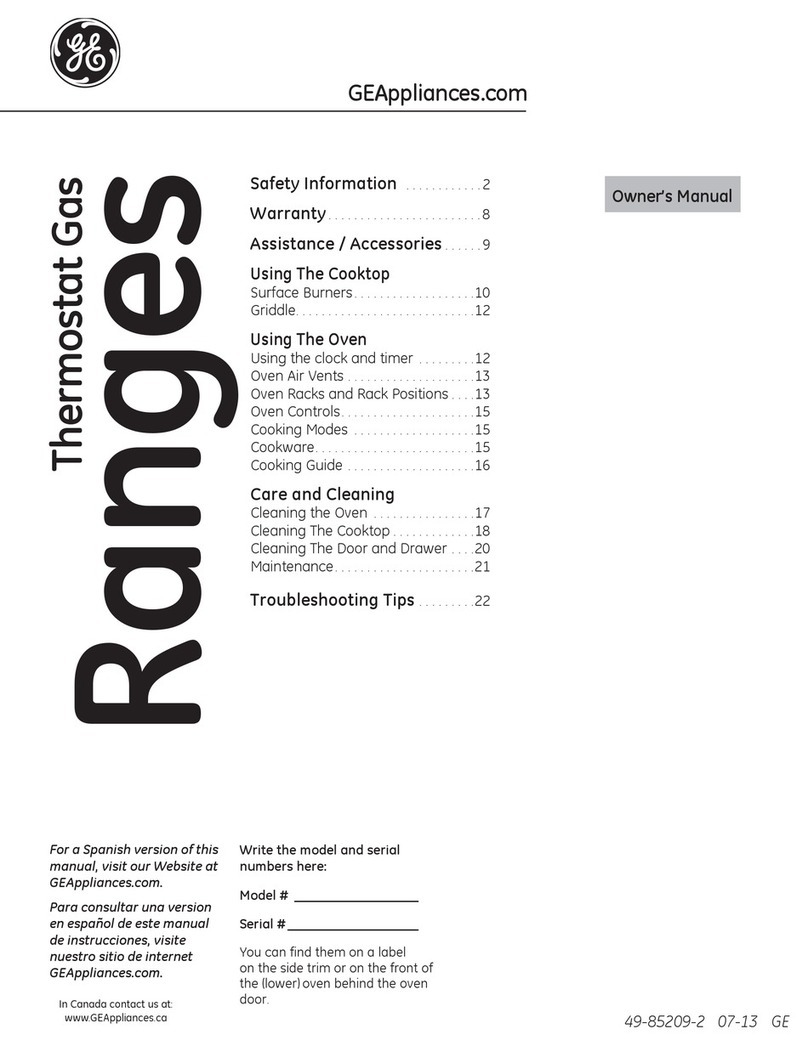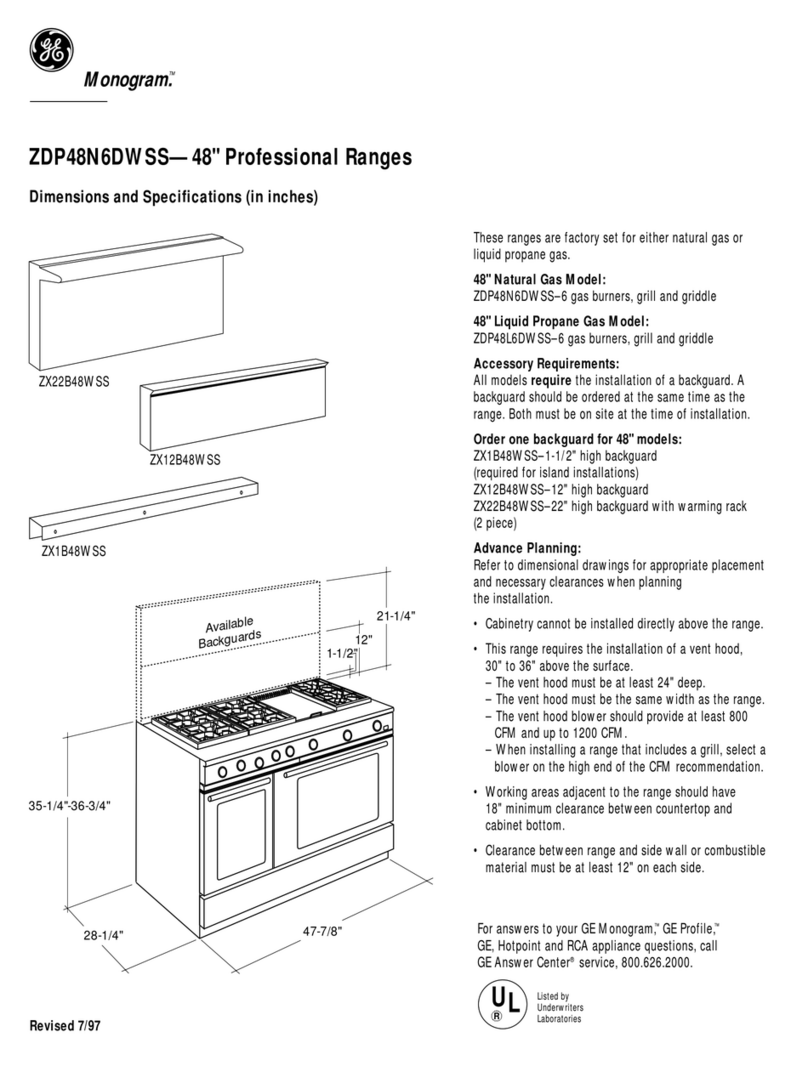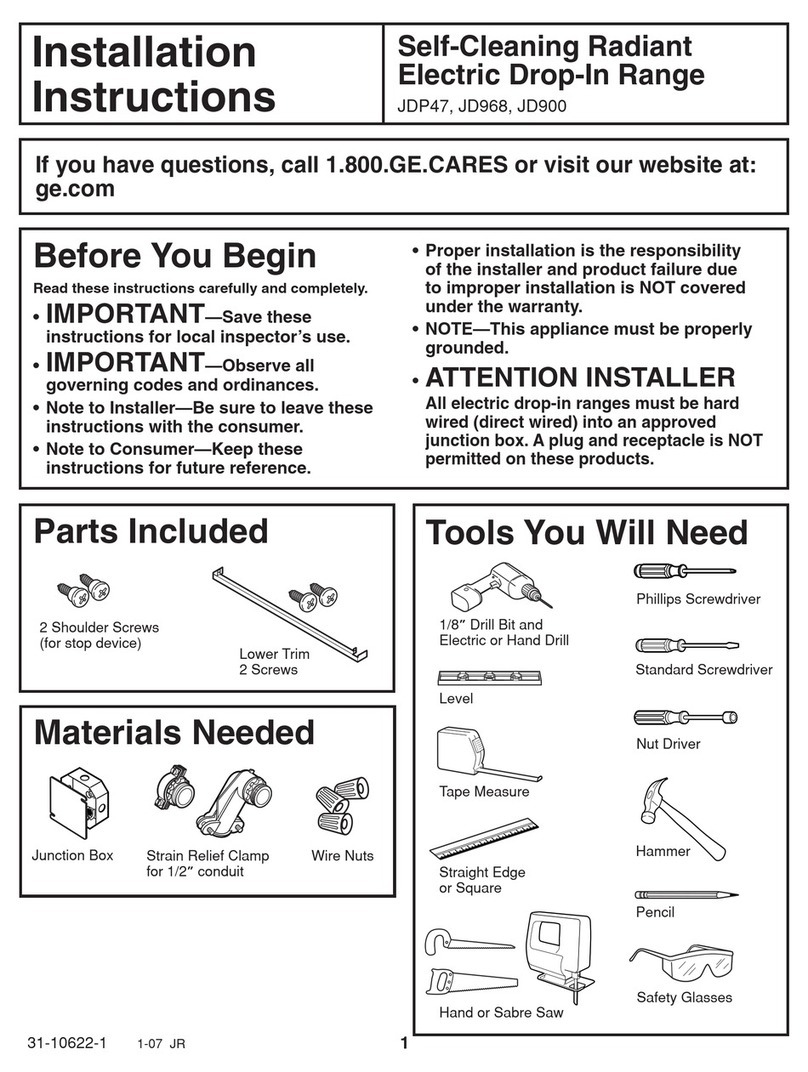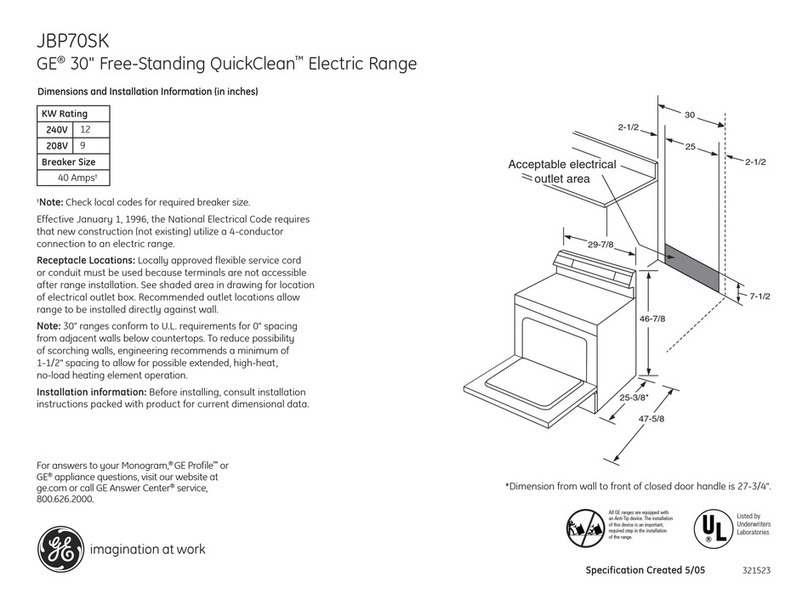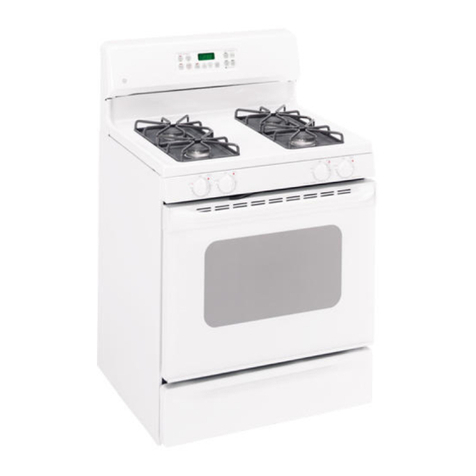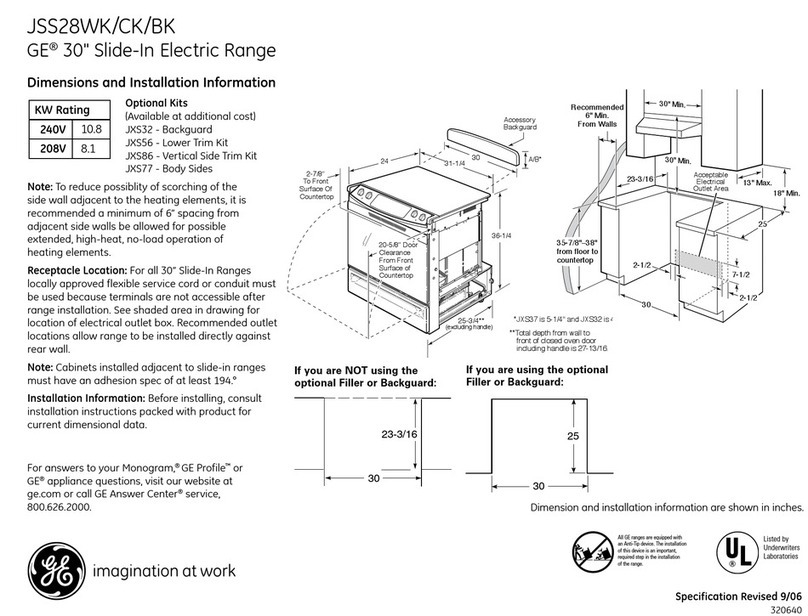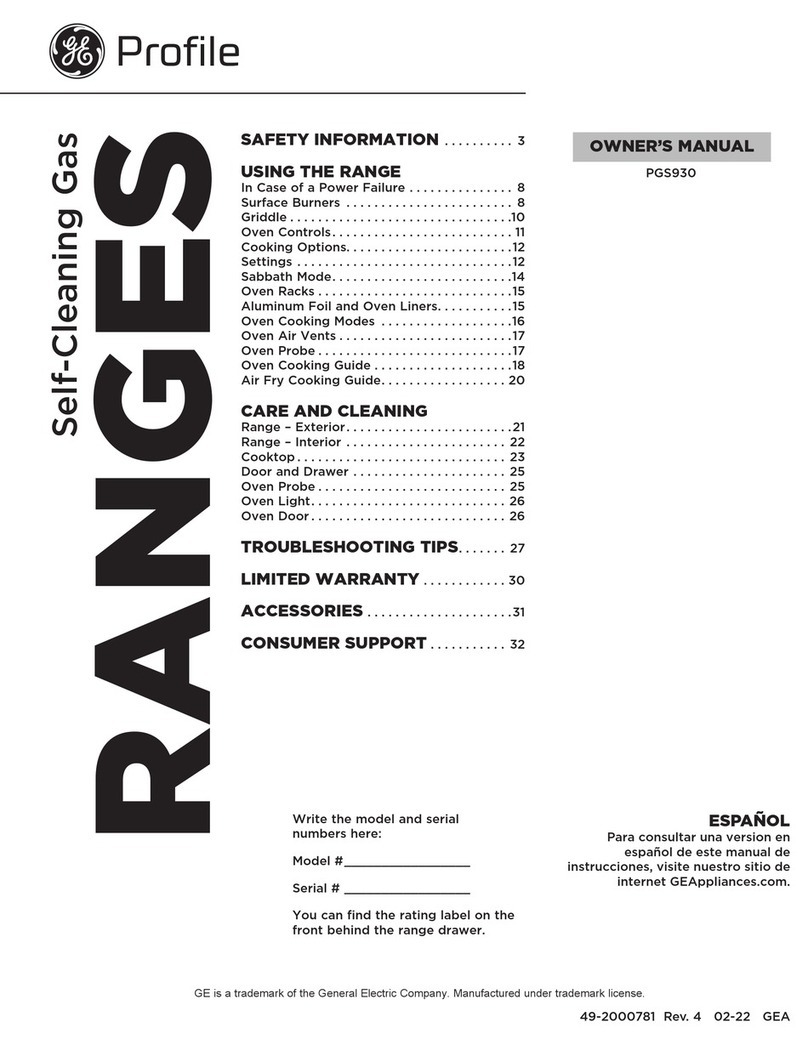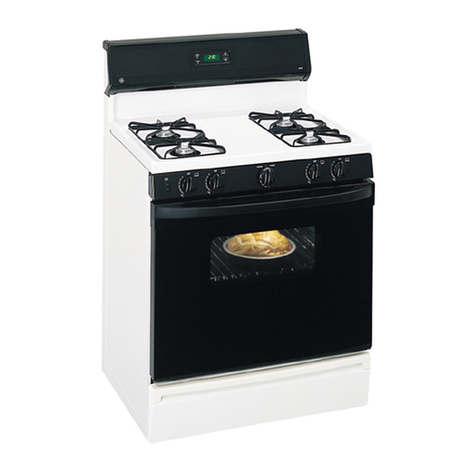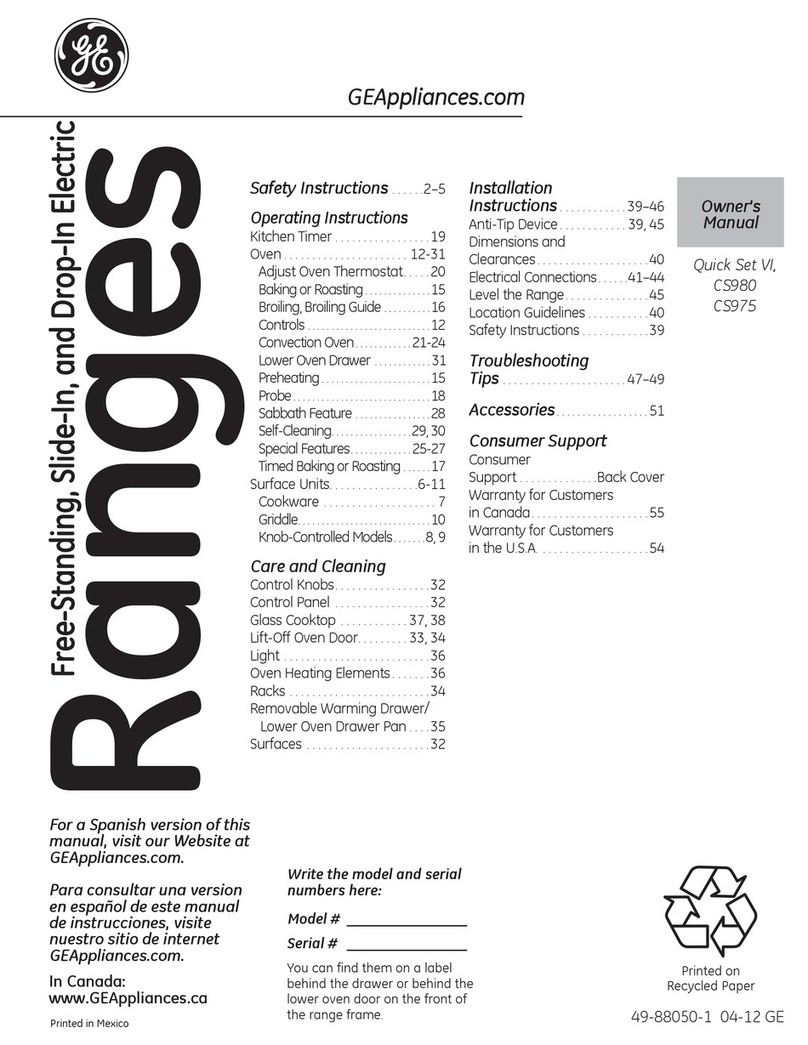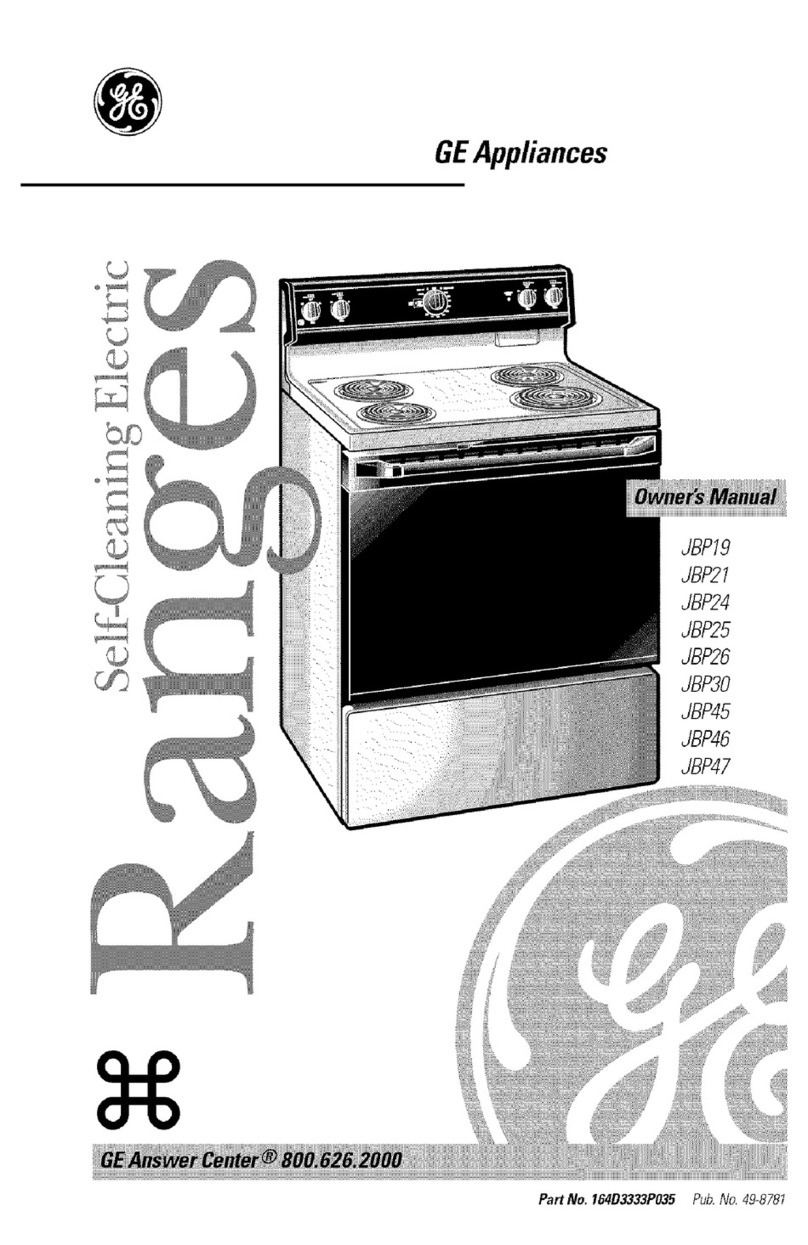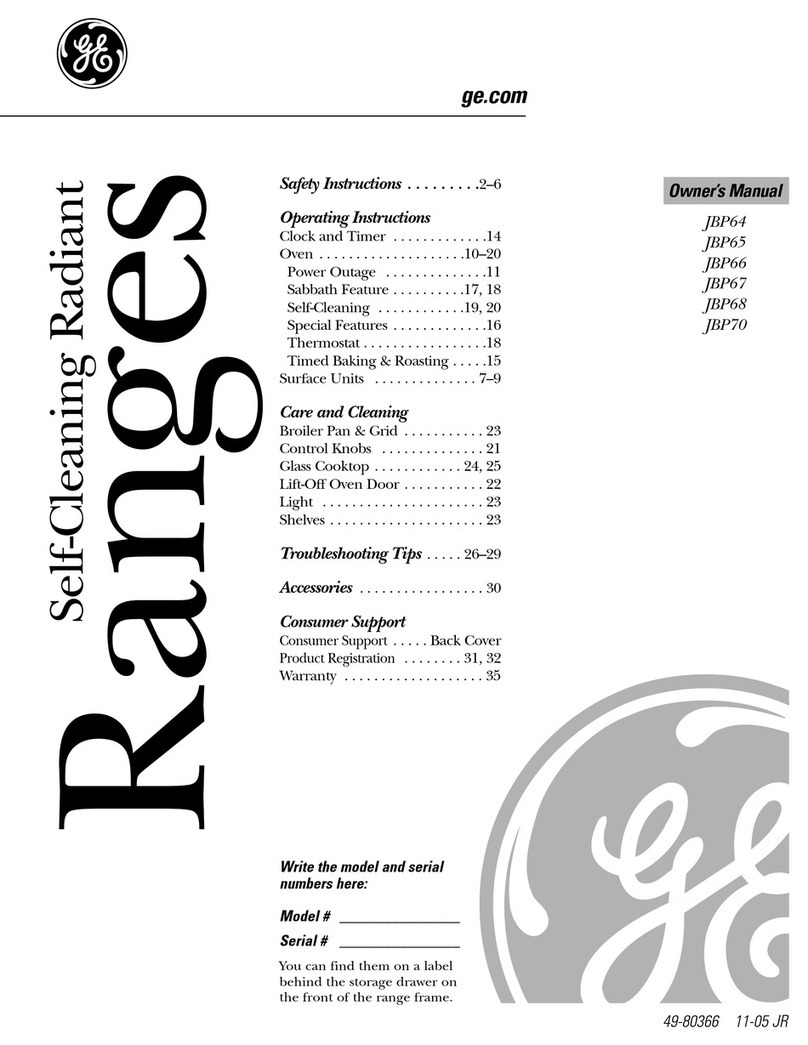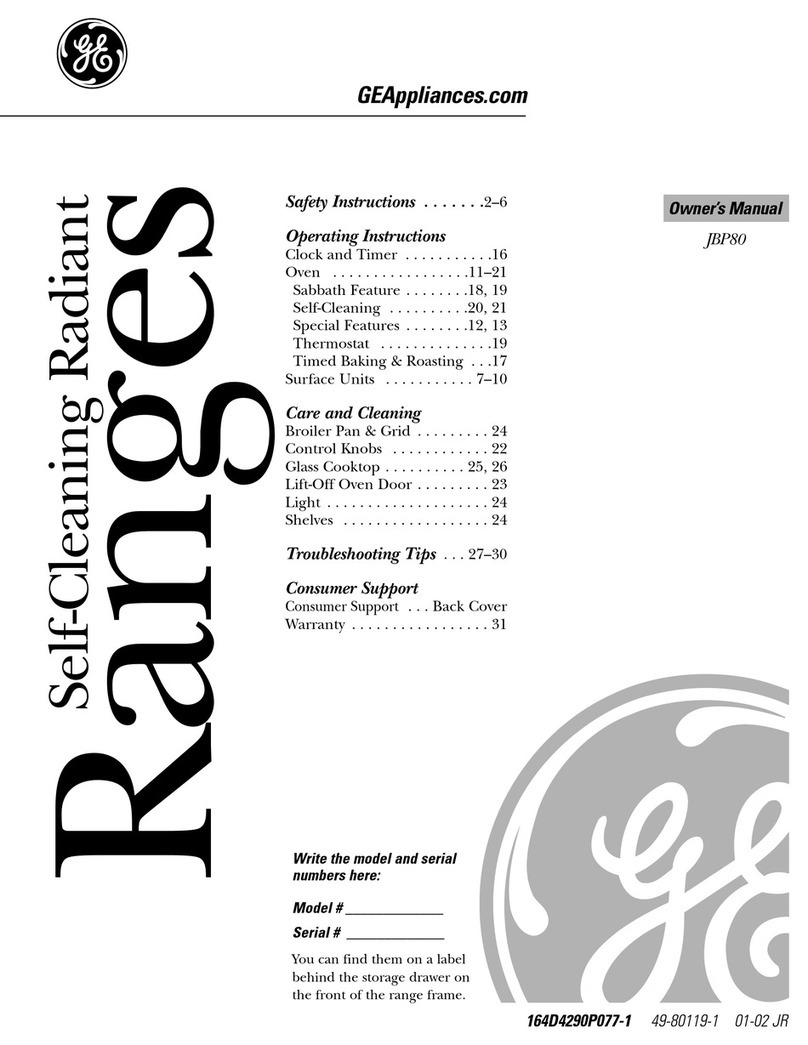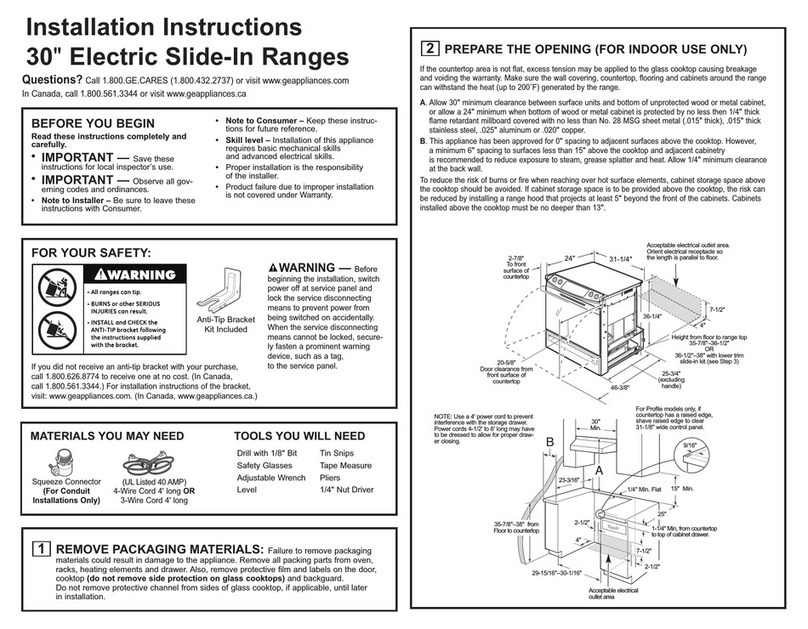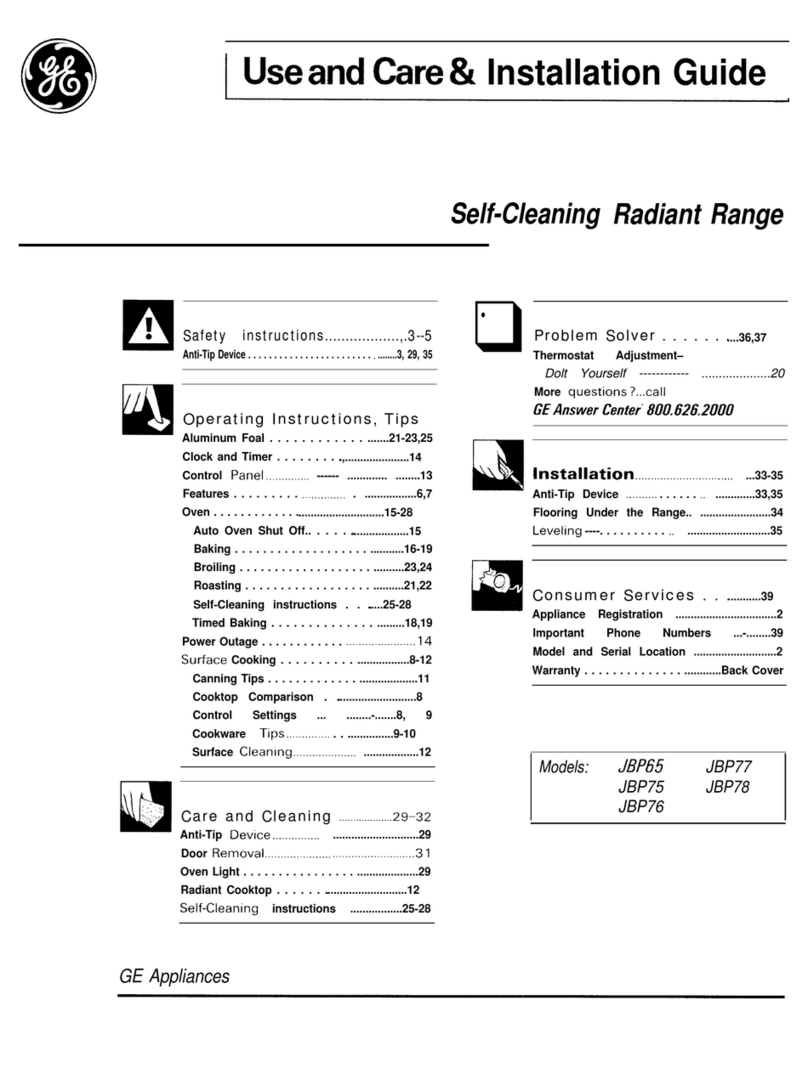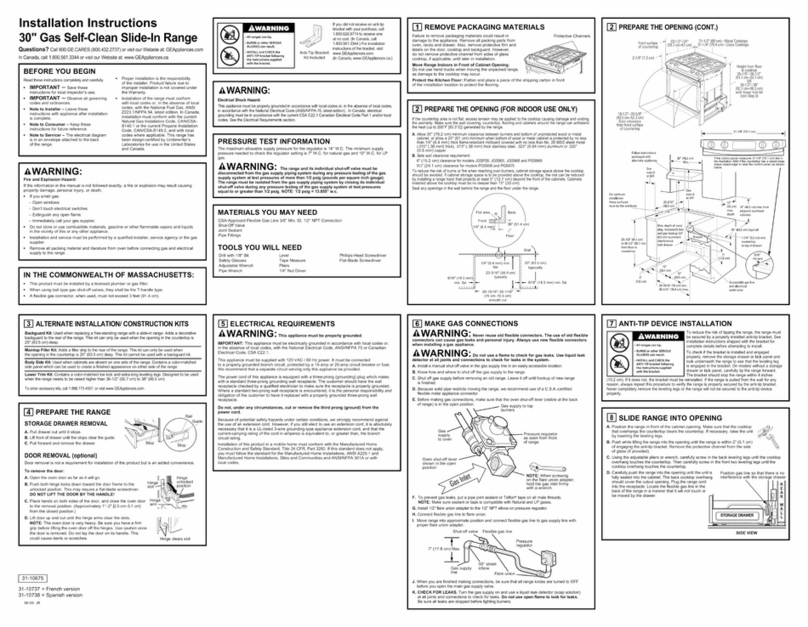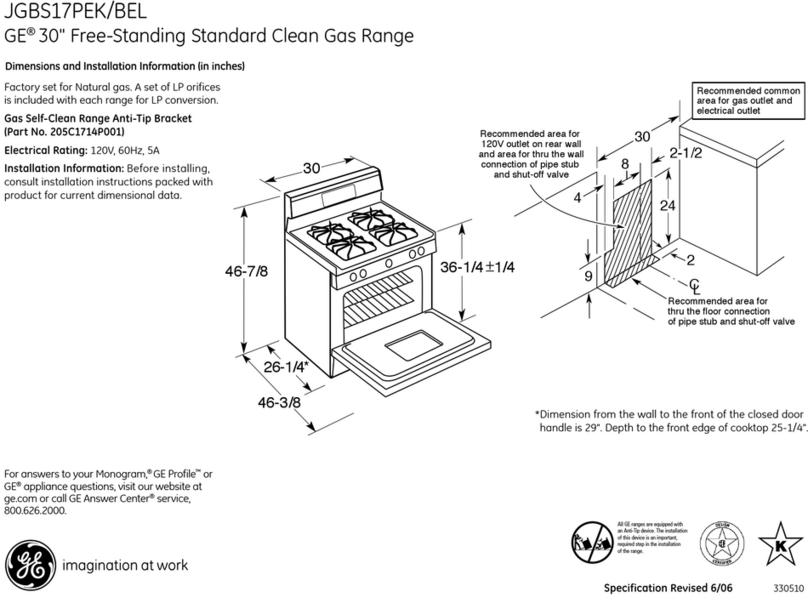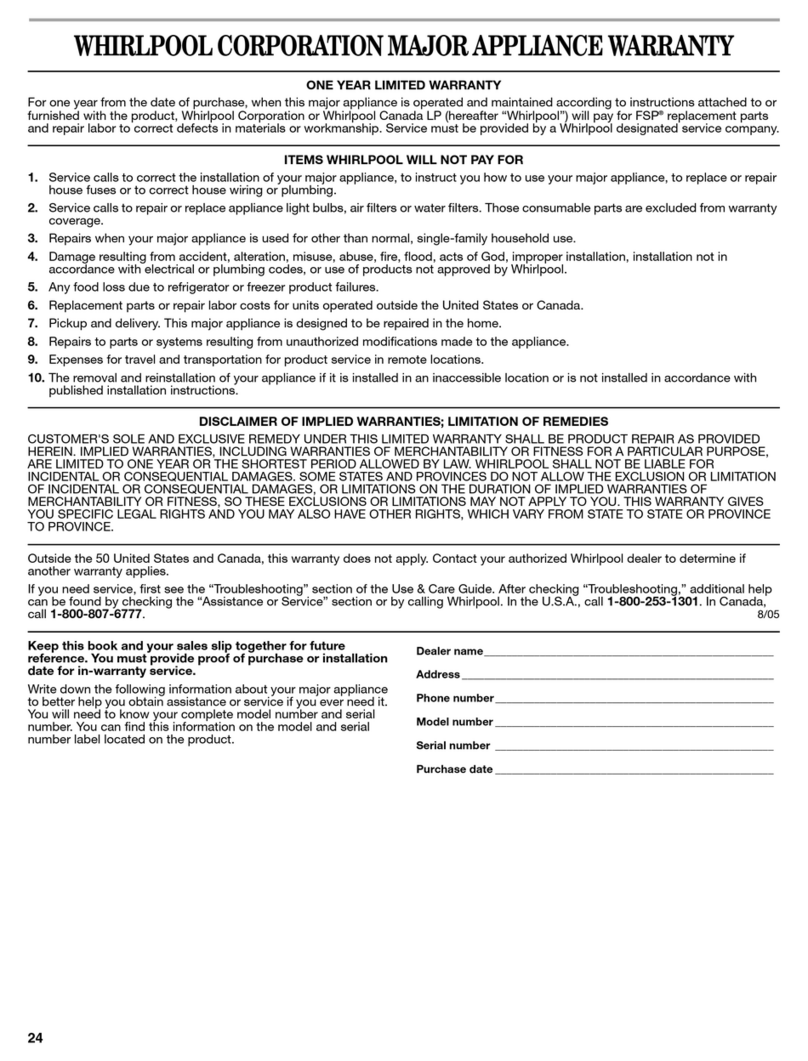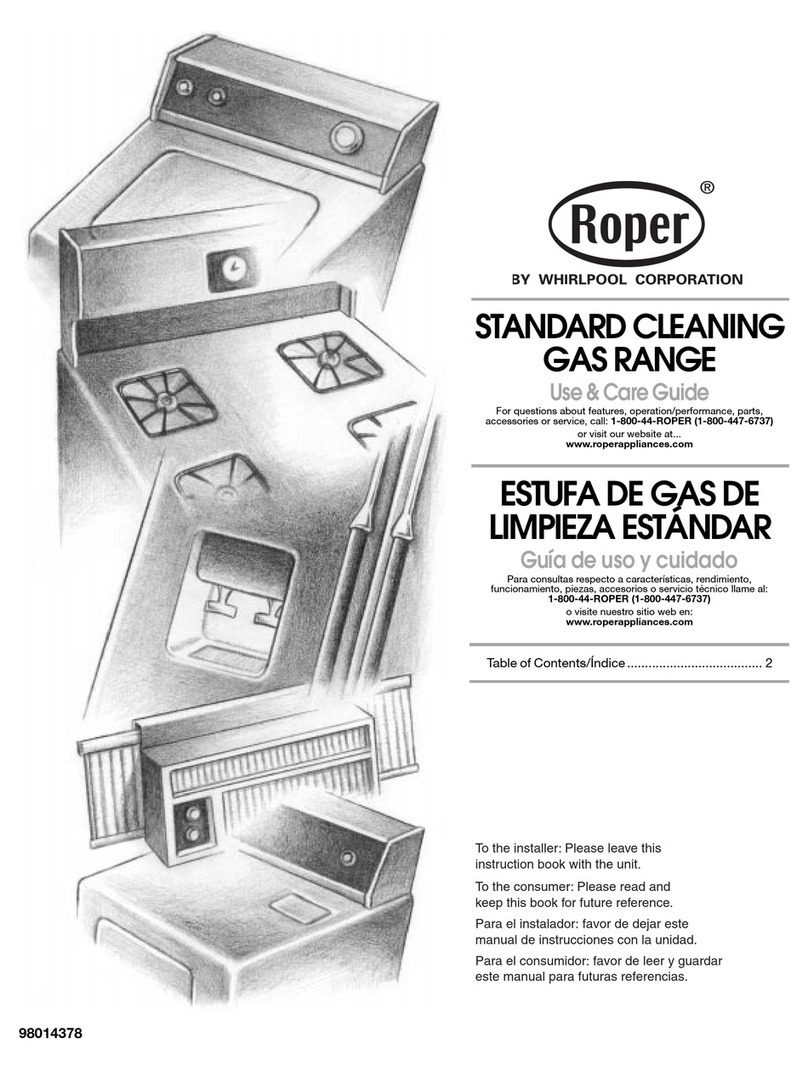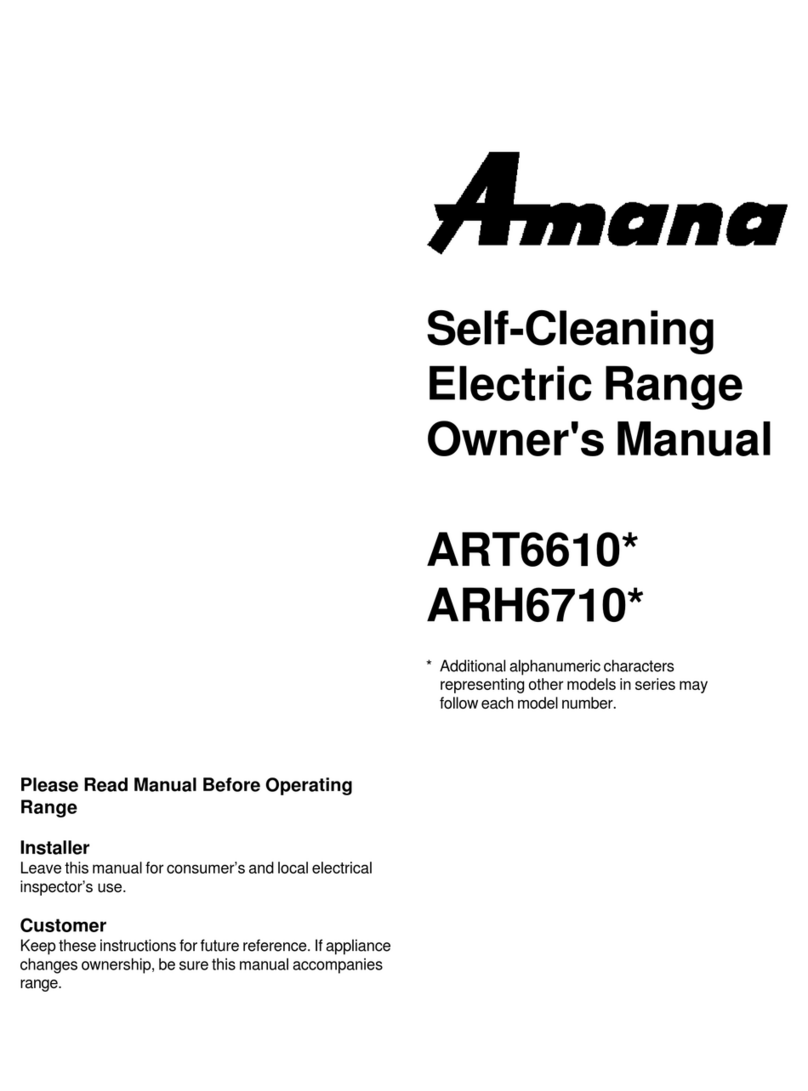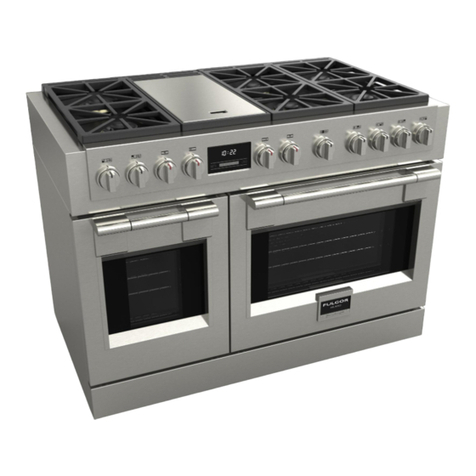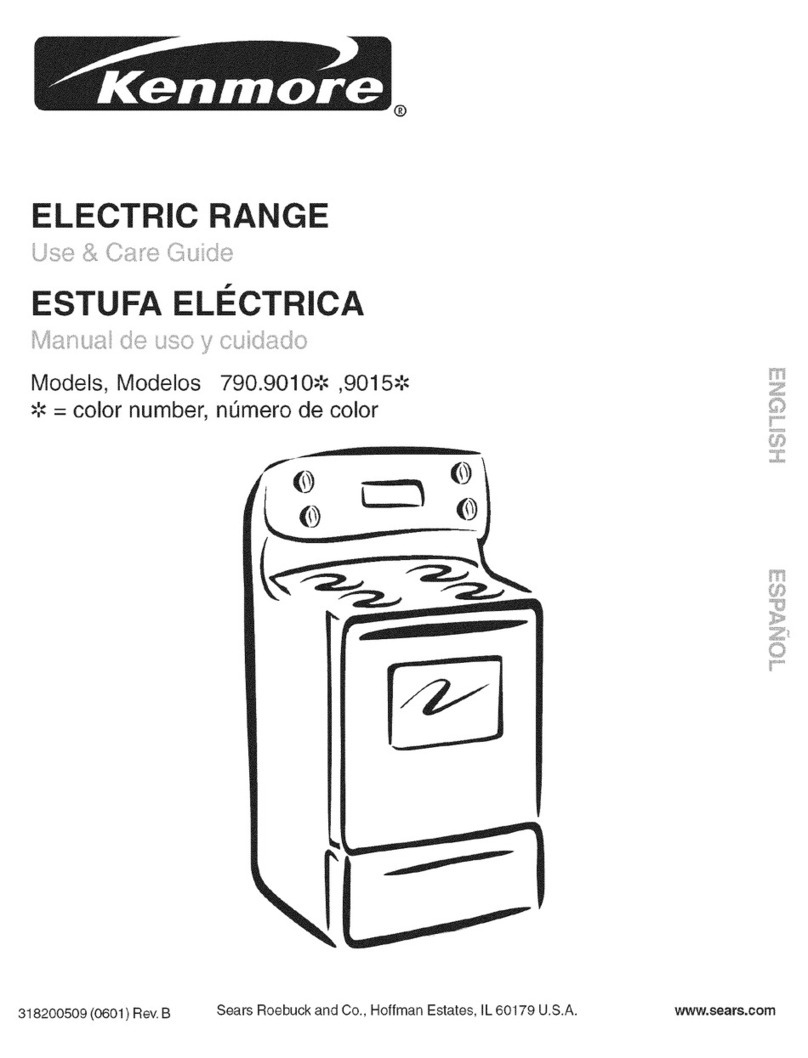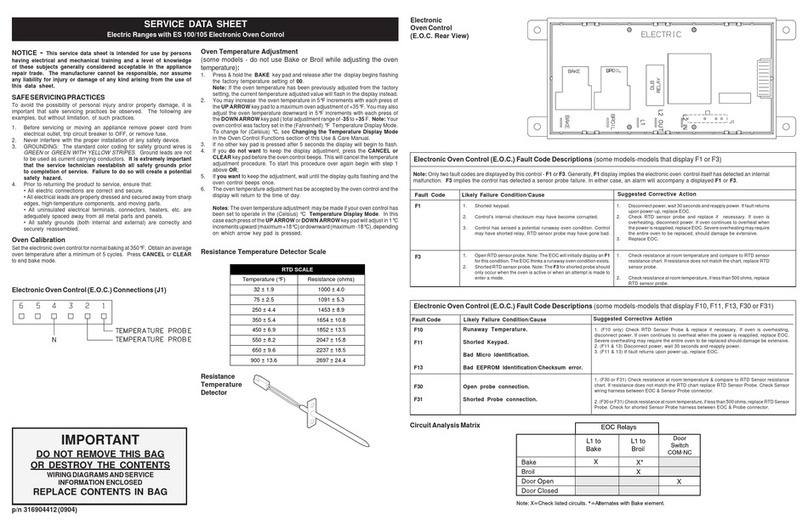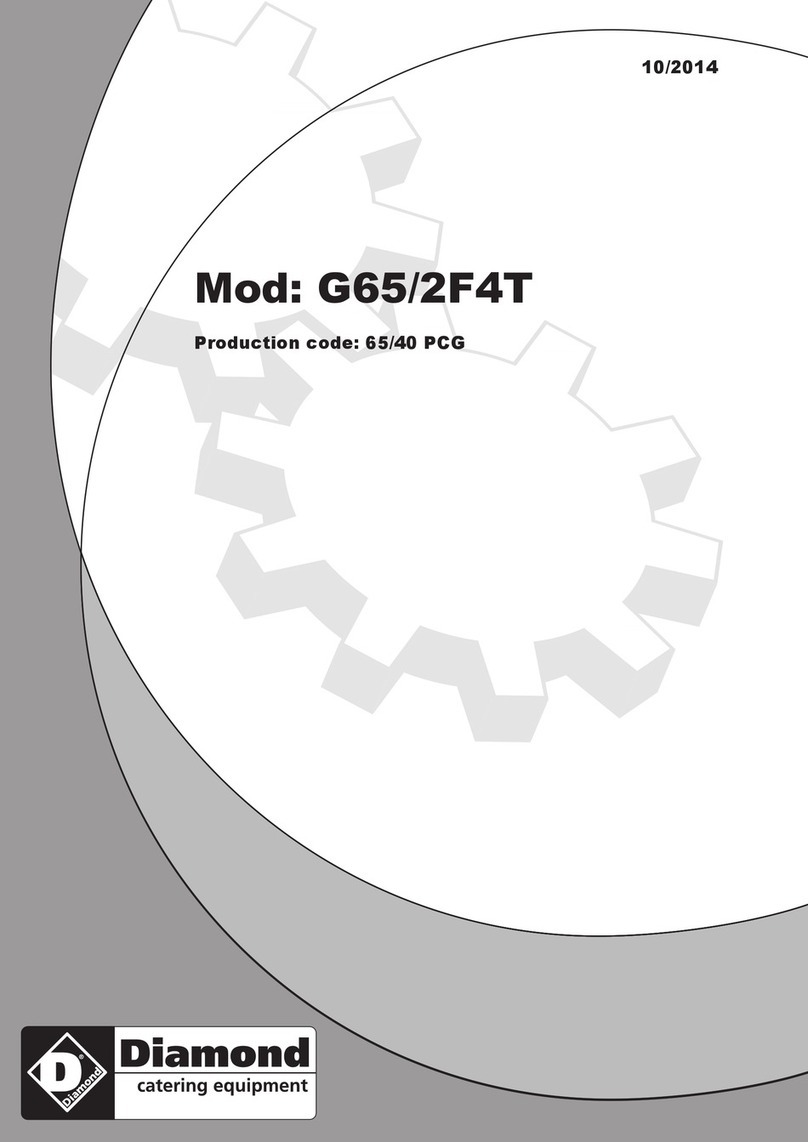,.
WORMT SAm~’mS~UC~ONS
(continued] ,.
●Foryoursafety,neveruseyourapptiancefor
warmingorheatingtheroom.
●DONOTSTOREORUSECOMBUST~LE
MATERIALS,GASOLINEOROTHER
FLAMMABLEVAPORSANDLIQUIDSIN
THEVICINITYOFTHISORANYOTHER
APPLIANCE.
●Keepthehoodandgreasefilterscleanto
maintaingoodventingandtoavoidgreasefires.
●Donotletcookinggreaseorotherflammable
materialsaccumulateinorneartherange.
&
4’ ●Donotusewaterongreasefires.
-* YNeverpickupaflamingpan.
Smotherflamingpan on surface unit
by coveringpan completelywith well-fittinglid,
cookiesheetor flat tray,or if available,usedry
chemicalor foam-typeextinguisher.
Flaminggrease outsideapan can be put out by
coveringwith bakingsoda or,if available,amulti-
purposedrychemicalorfoam-typefireextinguisher.
Flamein the ovencan be smotheredcompletely
by closingthe ovendoor and turningthe oven
controlto OFF or use adry chemicalor foam-
typefire extinguisher.
.Donottouchthesurfaceunits,theheating
●
elementsortheinteriorsurfaceoftheoven.
Thesesurfacesmaybe hotenoughto burneven
thoughthey aredark in color.Duringand after
use, do nottouch,or letclothingor other
flammablematerialscontactthe surfaceunits,
areas nearbythe sutiace unitsor any interiorarea
of the oven;allowsuficient timefor cooling,first.
Potentiallyhot surfacesincludethe cooktop,
areas facingthe cooktop,ovenventopening,
surfacesnearthe opening,crevicesaroundthe
ovendoor and metaltrim parts abovethedoor.
Remember:The insidesurfaceof theoven may
be hot when the dooris opened.
Whencookingpork,followthe directions
exactlyand alwayscookthe meatto an internal
temperatureof at least 170°F.This assuresthat,
in theremotepossibilitythattrichinamay be
presentin the meat, it willbe killedand the meat
willbe safe to eat.
4
oven
QStandawayfromtherangewhenopeningthe
ovendoor.Hot air or steamwhichescapescan
causeburnsto hands,face an~or eyes.
●Donotheatunopenedfoodcontainers.
Pressurecould buildup andthe containercould
burst,causingan injury.
●Keeptheovenventduct
unobstructed.
●Keeptheovenfreefrom
greasebuildup.
●Placetheovenshelfindesiredpositionwhilethe
oveniscool.If shelvesmustbehanded whenhot,
do notletpot holdercontacttheheatingelements.
●Pulling out the shelf totheshelfstopisa
convenienceinliftingheavyfoods.Itis also
aprecautionagainstburnsfrom touchinghot
surfacesof the door or ovenwalls.
●Whenusingcookingorroasting’bagsinthe
oven,followthe manufacturer’sdirections.
●Donotuseyouroventodrynewspapers.
If overheated,theycan catch fire.
●Donotuseovenforastoragearea.Items stored
in an ovencan ignite.
●Do not leavepaper products, cooking utensiis
or food in the oven when not in use,
Self-Cleating Oven
●Donotcleanthedoorgasket.Thedoorgasketis
essentialfor agood seal. Care shouidbe takennot
to rub, damageor movethe gasket,
●Donotuseovencleaners.Nocommercialoven
cleaneror ovenlinerprotectivecoatingof any kind
shouldbe usedin or aroundanypart of theoven.
Residuefromovencleanerswilldamagethe inside
of theovenwhenthe self-cleancycleis used.
●CleanonlypartslistedinthisUseandCare
Guide.
●Beforeself-cleaningtheoven,removethe
broilerpan, grid and other cookware.
.Besuretowipeupexcessspillagebefore
startingthese~-cleaningoperation.
●Iftheself-cleaningmodemalfunctions,turn
the ovenoff and disconnectthe power supply.
Haveit servicedby aqualifiedtechnician.
